Bone and Joint Infections
Bone and joint infections, also known as musculoskeletal infections, encompass a diverse group of conditions involving bacterial or fungal invasion of bones, joints, and surrounding tissues. These infections can result from hematogenous spread, direct extension from adjacent tissues, or traumatic inoculation. Staphylococcus aureus is a common culprit, particularly in acute hematogenous osteomyelitis, while prosthetic joint infections may involve a broader range of pathogens. Clinical manifestations include localized pain, swelling, redness, and limited joint mobility. In severe cases, systemic symptoms such as fever and chills may also be present. Diagnosis often relies on imaging studies, blood cultures, and sometimes joint aspirations to identify the causative organism. Treatment of bone and joint infections involves a combination of surgical intervention and antimicrobial therapy. Debridement, drainage, and, in some cases, joint replacement may be necessary to eliminate the source of infection. The choice of antibiotics is guided by the identified pathogen and its susceptibility profile. Duration of therapy varies but is generally prolonged, requiring close monitoring for resolution and potential complications. The emergence of antibiotic-resistant strains, especially methicillin-resistant Staphylococcus aureus (MRSA), emphasizes the importance of judicious antibiotic use and adherence to infection control measures.

Francis J Castellino
University of Notre Dame, United States
Ranjan Ramasamy
ID-FISH Technology, United States
Saurabh Chattopadhyay
University of Kentucky College of Medicine, United States
Rico Leonardo Lizbinski
Northern Light Health, United States
Sasha Leibholz
New York Presbyterian Columbia/Cornell, United States
Lauren Gruffi
New York Presbyterian Columbia/Cornell, United States



Title : Changing population immunity to COVID-19 in the context of infection, vaccination, and emerging SARS-CoV-2 variants
Ranjan Ramasamy, ID-FISH Technology, United States
Title : Extensively drug-resistant bacterial infections: Confronting a global crisis with urgent solutions in prevention, surveillance, and treatment
Yazdan Mirzanejad, University of British Columbia, Canada
Title : Bioterrorism through the ages: Historical perspective, emerging threats, and medical countermeasures
Claudia Ferreira, Sorbonne University, France
Title : Measles vaccination coverage indicators in 2023 and advance towards measles elimination and eradication by 2030
Pedro Plans Rubio, College of Physicians of Barcelona, Spain
Title : Pathogen-derived noncanonical epitopes: Are they valuable targets for novel vaccinations and shall we be concerned about autoimmune responses?
Michele Mishto, Francis Crick Institute, United Kingdom
Title : Severe influenza and other related respiratory infection cases during Omicron era in Japan
Masafumi Seki, Saitama Medical University International Medical Center, Japan